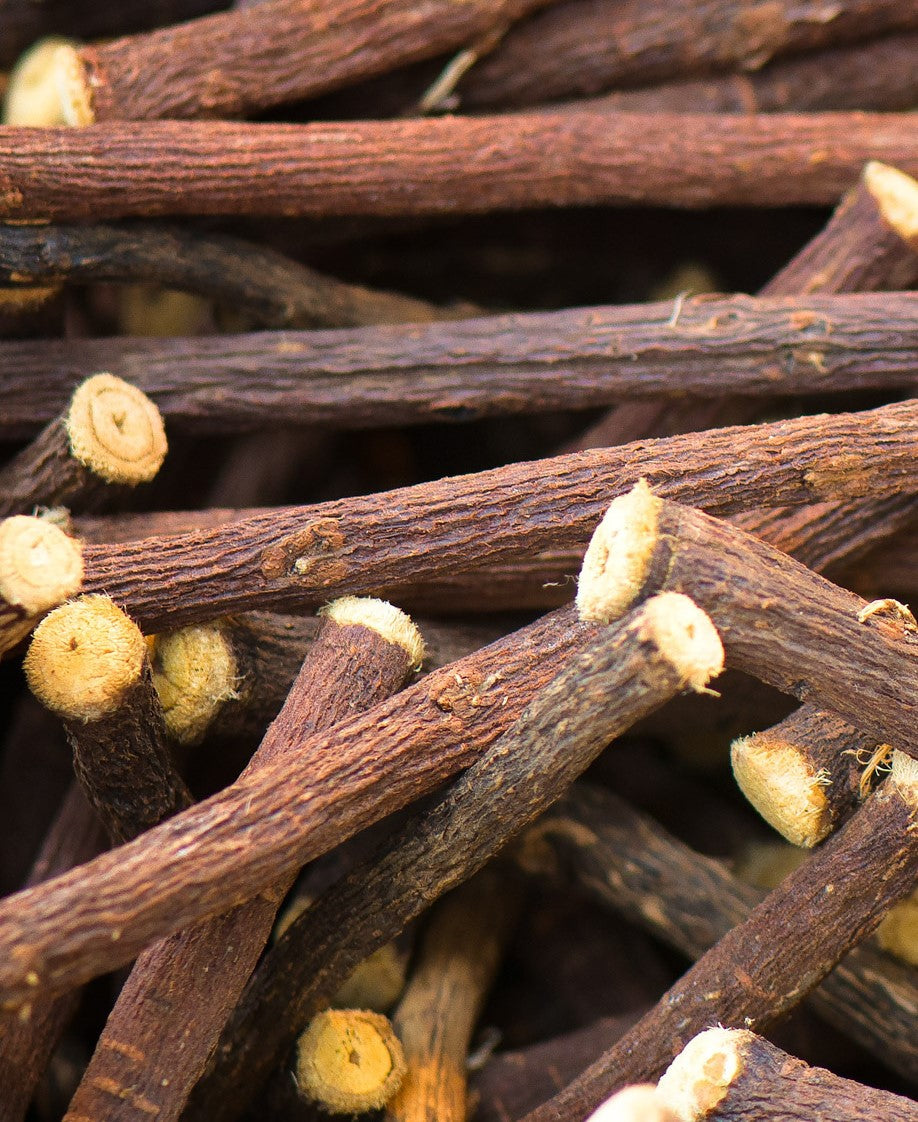
Licorice root
INCI: GLYCYRRHIZA URALENSIS ROOT EXTRACT
Glycyrrhiza uralensis, also known as Chinese licorice, is a Lepidoptera (Faboideae) native to Asia and the Mediterranean region within the legume family (Fabaceae). The yellow root of the plant, which forms extensive underground branches, is used as a sweetener and for licorice production as well as in traditional Chinese medicine. 9 to 17 oval-shaped leaflets sprout from the branches of the licorice bush. There are numerous blue-purple to blue-violet flowers in the leaf axils.
Effect
The licorice root extract with its up to 15% so-called is medicinally effective .Triterpene saponins are a mixture of salts and glyceric acid. The over 400 ingredients in the root have a whole range of positive effects. The expectorant and antibacterial effects make licorice root the perfect companion for colds. Other active ingredients have antispasmodic properties that have a calming effect on the stomach and intestines. In addition, the ingredients of licorice root also have an anti-inflammatory effect.
Studies
Jung, A. R. (2019). Anti-inflammatory effects of Hataedock with Coptidis Rhizoma and Glycyrrhiza Uralensis on Allergic Rhinitis through Regulating IL-4 Activation. Journal of Physiology & Pathology in Korean Medicine, 33(2), 116–122.
Shin, E. M., Zhou, H. Y., Guo, L. Y., Kim, J. A., Lee, S. H., Merfort, I., Kang, S. S., Kim, H. S., Kim, S. & Kim, Y.S. (2008). Anti-inflammatory effects of glycyrol isolated from Glycyrrhiza uralensis in LPS-stimulated RAW264.7 macrophages. International Immunopharmacology, 8(11), 1524–1532.
Yoon, T., Cheon, M., Kim, S., Choo, B., Moon, B., Lee, A., Chun, J. & Kim, H .(2009). Evaluation of the anti-inflammatory efficacy of Glycyrrhiza uralensis according to extracting solvents. Planta Medica, 75(09).

